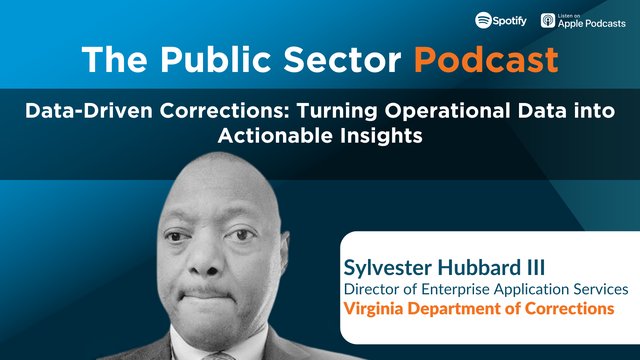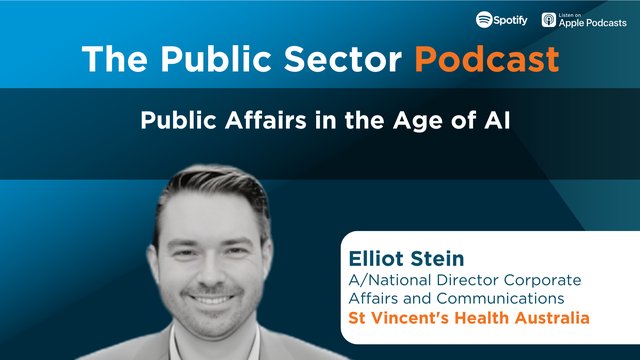Making IT Transformation a Whole-of-Staff Skillset

Dr. Eva Balan-Vnuk
,
South Australian (SA) Government’s Chief Information Officer
Department of the Premier and Cabinet
Creating a culture of workplace safety
The pandemic, that much of the world is still living through and starting to emerge from, has and continues to be one of the most challenging and chaotic periods of our lives. Whilst some people suffered less than others, almost everyone has experienced trauma and stress on a hitherto unprecedented level. In fact, Dr. Eva Balan-Vnuk, the South Australian (SA) government’s Chief Information Officer at the Department of the Premier and Cabinet, says that much like PTSD, some people will have PPSD – “post-pandemic stress disorder[1].” Even in SA, “where we have been fortunate in terms of the severity of COVID-19, we still need to be aware of it” because the pandemic has affected everyone’s lives in some way. This is as true for people in their personal lives as it is true in their work lives, and leaders need to be mindful of this because “our people bring their whole selves to work.”
[1] COVID-19: What is post-pandemic stress disorder and how can it affect your heart? | Patient
The Office of the Chief Information Officer (OCIO) “provides whole-of-government technology and cybersecurity services across the SA government.” Due to the importance of the work, “the way we harness these emerging technologies is absolutely critical.” Therefore, at OCIO and across the entire public sector, “we’re not going to be harnessing anything new if our people don’t feel safe.”
“It is incumbent on leaders and managers to really understand what’s happening with our people and our teams. The pandemic has impacted everyone, but in the workplace at least, everyone should have a place where they can feel safe, and we need to do our best to ensure that.”
Understanding people and their stresses
Despite all that humankind has been through and the fact that “our civilisations have changed dramatically over time, our brain has not evolved at the same pace,” particularly the amygdala, which is responsible for “emotional stress and our fight, flight or freeze response.” For the most part, the challenges and stresses that many people face these days, especially at work, are “no longer a fight for life or death, but the amygdala’s response is much the same as it has always been: it drains the blood out of the brain to our arms and legs in preparation for a physical response.” The problem with this is that most of the stresses these days are emotional, mental or cognitive, so the amygdala’s response impairs “our executive function, which is our ability to think rationally and logically.” The other problem is that it takes some time to reverse the physical impact triggered by the amygdala.
All of this means that if people are stressed by external matters – like the pandemic as an example – they will likely bring their stresses to work and “our ability as an organisation to get things done will almost certainly be hampered.” One way we can individually combat the amygdala’s response is to simply stop, sit down quietly and concentrate on breathing slowly and deeply for a minute or so. Physiologically, this tells the brain “that everything is OK, it’s fine to stand down.” Another way to better understand how our amygdala can be triggered is the SCARF method, developed in 2008 by neuroscientist, Dr David Rock. [1] The methodology suggests “that we are triggered by one of five elements:” Status, Certainty, Autonomy, Relatedness or Fairness. For instance, someone who has a heightened sense of social justice may feel “angry or upset if they perceive a lack of equity or a lack of fairness in any situation.” On the other hand, whilst one person may require certainty, another may be “super comfortable in a very ambiguous environment.” The point is that “as a person, as a leader, as a manager, it is really important to know where you stand and what triggers you.” It is equally important these days to know what triggers other members of the team as well.
[1] https://www.mindtools.com/pages/article/SCARF.htm
Building psychological safety at work
Not only is it important for people to know their own triggers, but it is equally important for people to understand the “psychological dangers” that threaten people at work too. For instance, “if people are feeling stressed, humiliated or belittled, they’re probably not going to do their very best work.” As part of that, most people know, as Peter Drucker said, ‘culture eats strategy for breakfast. “If this is true – which I believe it is – then it is important to build a team culture where people feel safe.” On top of that, it is important as leaders to practice “self-care and role-model good behaviours.”
In SA Government this culture of safety begins with “values for the entire public sector,” which were co-created by public servants around ten years ago. They include “service professionalism, trust, respect, collaboration and engagement, honesty and integrity, courage, tenacity, and sustainability.” For many teams within the public sector, adhering to these values “is how we ground ourselves,” and these values are a “fundamental foundation for the whole-of-staff skillset.” If everyone knows “what they stand for and what they are here to do, then we have an environment where we can do our best work.”
Being psychologically safe also means having the right skills to feel confident to do the job. For the SA Government Chief Information Officer, “IT service management is a priority across the SA government” and thus “we are investing in training across various elements of the business.” Some of the training comes from the ITIL 4 Framework [1] , which for “technologists can be quite fun, while we need to remember that we are there to provide value, specifically value as our customers perceive it.”
As important as the training is, the people that work at the various agencies across the government were likely hired in the first place because they have certain skills or expertise. “So let’s focus on amplifying and taking advantage of the strengths of everyone in our teams.” Some people are more strategic and others are more agile. For many agencies, these diverse traits were exemplified during the height of the pandemic. “For us, it meant we really flipped over into a cloud-hosted environment to allow a greater level of flexibility.” This was beneficial for both customers and staff. “Harnessing new technologies to deliver better outcomes for our customers was also a better experience for our own staff. They felt safe in delivering and providing that service to our customers.”
One of the reasons why this worked so well was because the staff embraced a concept called ‘growth mindset’, as defined by Professor Carol Dweck[2]. Whilst some examples of upskilling and training are specific for a specific purpose, “underpinning all of that is actually a growth mindset which gives people the confidence to grow, but also to fail.” In fact, failure is an important part of feeling safe at work. However, it is often seen “as a bit of a black mark against your name.” A failed start-up in Australia is “seen as quite a catastrophic event.” In the US, however, “it is quite the reverse.” That should be the case here too, and in fact, the word FAIL can be interpreted as the “First Attempt In Learning.” It may have some negative connotations, but it is “part of our ability to build confidence and experiment with new technologies. But we’ll only get there if failure is not just tolerated but welcomed as a learning experience.”
Governments obviously have “constraints and barriers,” but teams should have “little spaces to experiment.” In SA Health for instance, when there was “a remarkable number of calls about getting COVID tests and results” during the height of the pandemic, they experimented by launching a chatbot on their website to help deal with the volume of calls and requests. The chatbot has been well received by the public, which has given the SA Government confidence in exploring emerging technologies and experimenting in order to better serve our community.
says Dr. Eva Balan-Vnuk, Government Chief Information Officer, Department of the Premier and Cabinet, SA
[1] https://www.axelos.com/certifications/itil-service-management




































